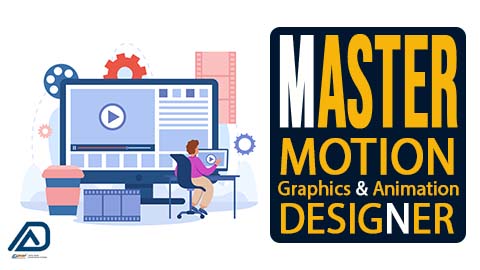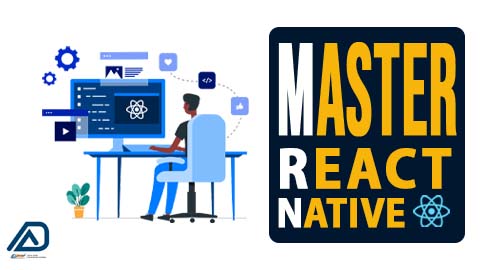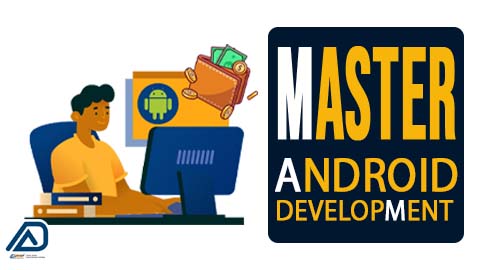Popular Topics
Web Design
Career Oriented
Video Editing & Graphic Design
development
Surat Flutter Development master's degree
What is Android Development
Master in IT AdTech
Video Editing
Master in Graphic & Animation
Master in iOS Development
Web Design & Development
Master in React Netive
Application Development (Android)
Local Flutter Development training near me
iOS
Flutter Development
Flutter Development near me
Android development institutes near me
Graphic Design
Best IT Master's AdTech
web design and development
Surat Android Development training
Top-rated web design master's near me
Master in Flutter Development
Master in Game Design & Development
React Native Development in Adtech Surat
AdTech IT Master's program
Adtech iOS Development training
Web Development
IT Master's degree at AdTech
AdTech Master's in Information Technology
Top-rated web design master's program
Local Motion Graphic & Animation classes Surat
React Native development
Application Development
Adtech Flutter Development courses
iOS Development courses Surat
Master's in advanced web design and development
Motion Graphic & Animation training at Adtech
IT specialization at AdTech Institute
iOS Development classes Adtech
Learn iOS Development in Surat
Web design and development master's program
Motion Graphic & Animation classes Adtech
Best-in-class React Native Development Adtech Surat
Learn iOS Development at Adtech
Android Development courses at Adtech
iOS Development classes in Surat
Web design and development course
Top-rated Motion Graphic & Animation near me
Expert React Native Development in Surat
Master's in Flutter Development Surat
Learn Android Development at Adtech
Surat iOS Development program
AdTech Master's in IT program
Advanced web design and development program
Motion Graphic & Animation courses near me
React Native Development courses nearby
Flutter Development training in Surat
iOS Development courses at Adtech
Android Development classes Adtech
Master web design and development
Motion graphics
Development master's program
Motion Graphic & Animation training nearby
React Native Development Adtech Institute
Best Flutter Development programs in Surat
Top-rated iOS Development near me
Android Development program Adtech
Top-rated Motion Graphic & Animation courses in Surat
IT Master's AdTech Institute
Web design and development training
Motion Graphic & Animation classes nearby
React Native Development training in Surat
Leading iOS Development courses nearby
Most popular keywords
Motion Graphic & Animation training in Surat
Flutter Development master's program Adtech
Premier iOS Development training near me
Android Development courses in Surat
AdTech IT postgraduate program
Best-in-class iOS Development programs in my area
Learn Android Development in Surat
Leading web development master's degree
top-rated Motion Graphic & Animation courses at Adtech
React Native app development
Master's in IT studies AdTech
Application Development in (iOS)
Android app development courses near me
Expert iOS Development classes nearby
Android Development classes in Surat
Premier web design and development course
Motion Graphic & Animation training in Adtech
Best React Native Development
Master's degree in IT at AdTech
Top-rated Flutter Development master's near me
Android development training nearby
Game design and development in India
Surat iOS Development training
Surat Android Development program
Best-in-class web design and development master's
Motion Graphic & Animation courses Adtech
Top-rated React Native Development near me
AdTech IT Master's courses
Premier Flutter Development courses nearby
iOS Development program Adtech
Best Android development classes nearby
Popular Instructors
All Master Courses
Master in Android Development
What is Android Development? Android development refers to the process …
What you'll learn
When learning Android development, you'll acquire a set of skills and knowledge that enables you to create mobile applications specifically for the Android platform. Android development involves various aspects of software development, user interface design, and working with the Android operating system.
Java or Kotlin: You'll learn one of the primary programming languages for Android app development, Java or Kotlin. Both languages are used to write the code that powers Android apps, with Kotlin gaining popularity for its modern and concise syntax.
Android Studio: Android Studio is the official integrated development environment (IDE) for Android development. You'll become proficient in using this tool to write code, design user interfaces, test, and debug your Android applications.
User Interface (UI) Design: You'll learn how to create user interfaces using XML layout files, including designing views, buttons, text fields, and other elements that make up the app's screens.
Activities and Fragments: Android apps are structured around activities, which represent different screens or windows. You'll learn how to create activities and use fragments to build flexible and responsive user interfaces.
Intents: You'll understand how to use intents to facilitate communication between different components of your app and between different apps. Intents are used to request actions or services from other parts of the app or from other apps.
Android Manifest: The AndroidManifest.xml file is a crucial configuration file that describes essential information about the app, such as its components, permissions, and version.
Data Storage: You'll learn how to store and manage data in Android apps. This includes using databases (e.g., SQLite), SharedPreferences, and working with external storage.
Networking: Understand how to make network requests and integrate data from web services and APIs into your Android app.
Notifications: Learn to create and manage notifications to provide updates and alerts to users.
Permissions: Understand the Android permission system and how to request and manage permissions for various device features and data access.
Testing and Debugging: Proficiency in testing your app using the Android Emulator and real devices, as well as debugging and troubleshooting issues in your code.
Publishing on Google Play: Learn how to prepare your app for publication on the Google Play Store. This includes creating assets, writing app descriptions, and following Google's guidelines for app submission.
User Experience (UX) Design: Gain an understanding of UX principles to design user-friendly and visually appealing apps.
Adaptive Design: Learn how to create responsive layouts that adapt to different screen sizes and orientations.
Material Design Guidelines: Familiarize yourself with Google's Material Design guidelines to create apps with a consistent and modern look and feel.
Security Best Practices: Understand best practices for securing your app and protecting user data.
Android APIs: Android provides a vast set of APIs for accessing device hardware, sensors, location, camera, and more. You'll learn how to utilize these APIs to enhance your app's functionality.
Performance Optimization: Discover techniques for optimizing your app's performance, such as background processing, image loading, and efficient memory management.
Offline Support: Learn how to build apps that work offline or in low-network conditions.
Version Control: Use version control systems like Git to track changes in your code and collaborate effectively with others.
What you'll learn
JavaScript: A strong foundation in JavaScript is essential. You'll need to understand the language, its syntax, data structures, and concepts like variables, functions, and asynchronous programming.
React: React is a JavaScript library for building user interfaces. You'll need to become proficient in React to create the UI components for your mobile app. This includes understanding React's component-based architecture and state management.
React Native Fundamentals: Learn the basics of React Native, including how to set up a development environment, create a new project, and structure your code. You'll also learn about JSX (a syntax extension for JavaScript used with React), component lifecycle methods, and state management.
Navigation: Mobile apps often have complex navigation structures. React Navigation is a popular library for implementing navigation in React Native apps. You'll learn how to create different types of navigation stacks, tabs, and drawers.
Styling: You'll learn how to style your components using the built-in styles, as well as libraries like StyleSheet, which help you create responsive and platform-specific designs.
Data Management: You'll need to understand how to fetch and manage data in your app. This may involve making API calls, handling data storage, and using state management libraries like Redux or MobX.
Component Development: Learn how to create reusable and custom components, which are essential for building a well-structured app and for reusing code.
Master in iOS Development
What is iOS Development? Meta Description: Discover Flutter, an open-source …
What you'll learn
Learn the Basics of Swift: Swift is the primary programming language for iOS development. Your first objective should be to understand its syntax, data types, and basic programming constructs.
Master Xcode: Familiarize yourself with the Xcode integrated development environment (IDE), which is essential for iOS app development. Learn how to navigate the IDE, create and manage projects, and utilize its debugging and testing tools.
Understand UIKit: UIKit is a fundamental framework for building iOS user interfaces. Learn how to create views, buttons, labels, and other UI elements, and how to use Interface Builder to design app layouts.
App Lifecycle: Gain a deep understanding of the iOS app lifecycle, including how apps launch, run, enter the background, and terminate. Learn how to handle various app states effectively.
Navigation and Storyboards: Learn to use storyboards to design app navigation and interfaces, including how to implement navigation controllers, tab bar controllers, and segues.
Table Views: Master table views and understand how to display lists of data in iOS apps. Learn how to populate and customize table view cells.
Data Storage: Explore various options for data storage, such as UserDefaults, Core Data, and file system storage. Understand when to use each method based on your app's requirements.
Networking and APIs: Learn how to make network requests and handle data from web services and APIs. Familiarize yourself with URLSession and JSON parsing.
User Interface Design: Gain skills in creating user-friendly and visually appealing app interfaces. Understand design principles, including layout, typography, and user experience (UX) design.
User Authentication: Learn how to implement user authentication and authorization in your apps. This might include email/password logins, social media logins, or other authentication methods.
Notifications: Understand how to use local and remote notifications to keep users informed about app events, updates, and messages.
Core Animation and Graphics: Explore Core Animation and Core Graphics frameworks to create animations, custom graphics, and visual effects in your apps.
Debugging and Testing: Develop skills in debugging and testing your iOS apps. Learn how to identify and fix bugs and optimize your code.
App Store Guidelines: Familiarize yourself with Apple's App Store guidelines to ensure your apps meet the necessary requirements for submission and approval.
Version Control: Learn to use version control systems like Git to manage and collaborate on your code effectively.
Performance Optimization: Understand how to optimize your app's performance, including reducing memory usage, optimizing code, and improving user experience.
Continual Learning: iOS development is a constantly evolving field. Set a learning objective to stay updated with the latest iOS updates, frameworks, and best practices.
Master in Motion Graphic & Animation
What is Motion Graphic & Animation? Motion graphics and animation …
What you'll learn
Concept and Storyboarding: You'll learn how to develop concepts and create storyboards to plan the visual narrative of your motion graphics projects.
Graphic Design Principles: Understanding design fundamentals such as layout, composition, color theory, typography, and visual hierarchy is essential for creating visually appealing graphics.
Animation Principles: Explore animation principles like timing, spacing, easing, and staging, which are crucial for creating smooth and engaging motion.
Software Tools: Gain proficiency in industry-standard software tools like Adobe After Effects, Adobe Premiere, and Adobe Illustrator for creating and animating graphics.
Text Animation: Learn to animate text and create dynamic typography for titles, captions, and other on-screen text elements.
Transitions: Understand how to create seamless transitions between scenes or content, which is often used in video editing and presentations.
Data Visualization: Develop skills in visualizing data, statistics, and information in a way that is clear and engaging for the audience.
Rendering and Exporting: Learn how to render and export motion graphics projects in various formats for different platforms and devices.
Audio Integration: Explore how to incorporate sound effects and music to enhance the impact of motion graphics.
Animation Principles: Study the core principles of animation, including squash and stretch, anticipation, follow-through, and overlapping action.
2D Animation: Learn the techniques of 2D animation, including frame-by-frame animation and tweening, for creating smooth character movements and visual effects.
Character Animation: Master character animation, which involves creating lifelike and expressive movements for characters, often used in animation films and games.
3D Animation: Gain skills in 3D animation, including modeling, rigging, and animating 3D characters, objects, and environments.
Visual Effects (VFX): Explore the creation of visual effects, such as explosions, fire, and supernatural phenomena, often used in film and television production.
Stop Motion Animation: Learn the techniques for stop motion animation, involving the use of physical objects, such as clay figures or puppets, moved incrementally to create motion.
Computer-Generated Imagery (CGI): Understand how to create realistic and fantastical creatures, settings, and special effects using CGI techniques.
UI/UX Animation: Study animation techniques used in user interface (UI) and user experience (UX) design to enhance the interactivity and usability of digital products.
Game Animation: Explore the principles and techniques for creating character and object animations in video games, including character rigging and keyframe animation.
Master in Game Design & Development
What is Game Design & Development? Game design and development …
What you'll learn
User Experience (UX) Design: Explore user-centered design principles to create an intuitive and enjoyable gaming experience.
Programming: Gain expertise in programming languages commonly used in game development, such as C++, C#, or JavaScript, to implement game mechanics, graphics, physics, and AI.
Physics and Simulation: Understand how to incorporate physics engines to create realistic in-game movement, interactions, and effects.
Sound and Music: Learn to create and integrate audio elements, including music, sound effects, and voiceovers, to enhance the gaming experience.
Testing and Quality Assurance: Gain the skills to identify, report, and fix bugs, glitches, and issues in the game. This includes manual and automated testing.
Optimization: Optimize games to run smoothly on various platforms, including resource management, graphics settings, and performance improvements.
Game Prototyping: The process of creating rapid prototypes to test and refine game ideas is an essential skill. You'll learn how to quickly build and evaluate game concepts.
Master in Flutter Development
What is Flutter Development? Flutter is an open-source UI (User …
What you'll learn
Learning objectives in Flutter are concise statements that outline what you aim to achieve while learning Flutter development. These objectives guide your learning process and help you focus on key skills and knowledge areas. Here's a short note on common learning objectives in Flutter
Flutter Fundamentals: Understand the core concepts of Flutter, including widgets, layouts, and UI components.
Dart Programming: Learn the Dart programming language, which is essential for Flutter development.
User Interface Design: Master designing user interfaces with Flutter widgets, understanding layout principles, and creating responsive designs.
State Management: Explore various state management techniques and choose the right one for your app's complexity.
Navigation: Implement navigation and routing between screens in your Flutter app.
Data Handling: Work with data sources, APIs, and databases to fetch and display information in your app.
Flutter Animation: Create engaging animations and transitions to enhance user experience.
Testing and Debugging: Write tests to ensure the reliability of your app and troubleshoot issues effectively.
Platform-specific Features: Learn to integrate platform-specific features and plugins for Android and iOS.
App Deployment: Understand the app packaging and publishing process for Google Play Store and Apple App Store.
Performance Optimization: Optimize your Flutter app for better performance and responsiveness.
Continuous Learning: Stay updated with Flutter's evolving ecosystem, explore new packages, and engage with the community.
Real-world Projects: Apply your skills to build practical Flutter apps, gaining hands-on experience.
Open-source Contribution: Contribute to open-source Flutter projects to deepen your understanding and collaborate with the community.
Problem Solving: Develop the ability to solve common issues and challenges in Flutter development.









